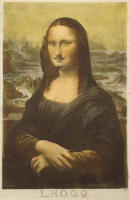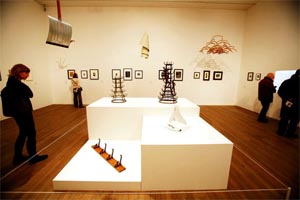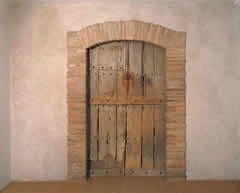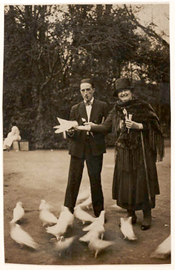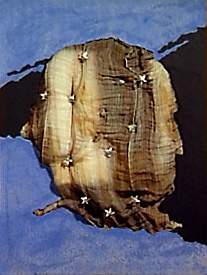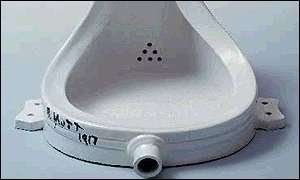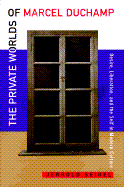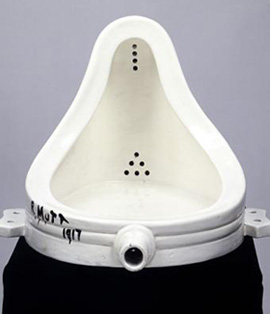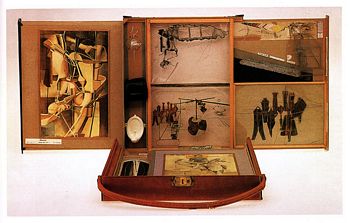Duchampian News & Views
-
Mona Lisa Images for a Modern World
January 19, 2009 "Using the Mona Lisa to mediate between high and low culture is not new. Soon after the turn of the 20th century, the Dada movement revolted against the "high cultural" content of the visual arts. In doing this, in some cases the Dadaists elevated the mundane into the world of the "aesthetic" by forcing observers to look at everyday objects in surprisingly new contexts. At other times cherished objects and symbols were ridiculed. The most well known a.. read more... -
A romp with the rat pack
January 19, 2009"This is a very large exhibition, with more than 300 works: paintings, photographs, sculptures, readymades, films, chess sets, and a wealth of documentary material. There is much here I was previously unaware of. The show takes us from the early years of the 20th century to 1976, when the last of the trio, Man Ray, died. In between, there are shocks and surprises, dirty pictures and beautiful enigmas."
read more... -
Judovitz `unpacks’ Duchamp and his legacy to modernism
January 19, 2009 " It didn't bother Dalia Judovitz that she was officially an expert in 17th century French literature and philosophy when she decided to write a book on Marcel Duchamp, considered by many to be the major art figure of the 20th century. Even though she was not an art historian, she had a strong background in aesthetics and a philosophical and conceptual interest in art. She was intrigued by the philosophical significance of Duchamp's artworks. In her 1995 book Unpackin.. read more... -
Dreier and Duchamp, modernism’s dynamic duo
January 19, 2009"Dreier and Duchamp. Duchamp and Dreier. As dynamic artist duos go, the pairing of Katherine S. Dreier and Marcel Duchamp does not have the familiar ring of Picasso and Braque, or Johns and Rauschenberg. But it should, and "The Société Anonyme: Modernism for America" at the Phillips Collection here may begin to make it so."
read more... -
The flag: Michael Taylor picks Marcel Duchamp
January 19, 2009"The biting satire of [Duchamp’s] portrait of George Washington reflects the artist’s nihilistic mood during the Second World War, which had brought back painful memories of the jingoistic patriotism that had led to the senseless loss of so many of his friends and even family members, including his oldest brother Raymond Duchamp-Villon, during the First World War."
read more... -
Influances and Originality
January 19, 2009 In his article Reinventing the wheel, Jonathan Jones states that Duchamp's "big idea - that any ordinary "readymade" object can be chosen by the artist as a work of art - has sunk so deep into modern culture that he is imagined almost as a biblical prophet, a remote figure of authority." Jones argues that today the ideas behind Duchamp's readymades are taken for granted and we often forget what a wholly original and unprecedented concept thte readyma.. read more... -
Marcel Duchamp’s Legacy to 20th Century Art
January 17, 2009 "The `readymades,'as Duchamp called them, borrowing an English word he picked up in New York, are usually understood as critical pranks that show how arbitrary is the marriage of object and meaning or intent in traditional artworks. "In `The Private Worlds of Marcel Duchamp,'Jerrold Seigel, professor of history at New York University, has a less confrontational view of Duchamp that sets the artist apart from the refractory high jinks of Dada with which he is common.. read more... -
Museum of Hoaxes: Marcel Duchamp
January 17, 2009"Marcel Duchamp (1887-1968) always held the snobbishness of art collectors and gallery owners in disdain. While he was a revolutionary artist with at least one eternal masterpiece (‘Nude Descending a Staircase’), he was also a supreme prankster to those few who ‘got the joke.’"
read more... -
Marcel Duchamp and Joseph Cornell
January 14, 2009 "Currently on view in Measure of Time, an evolving exhibition examining temporality and duration in American art of the past century, are works from the BAM collections by two ancestors of the assemblage aesthetic celebrated in Semina Culture: the consummate intellectual gamesman Marcel Duchamp, and Joseph Cornell, maker of poetically evocative box constructions.".. read more...




